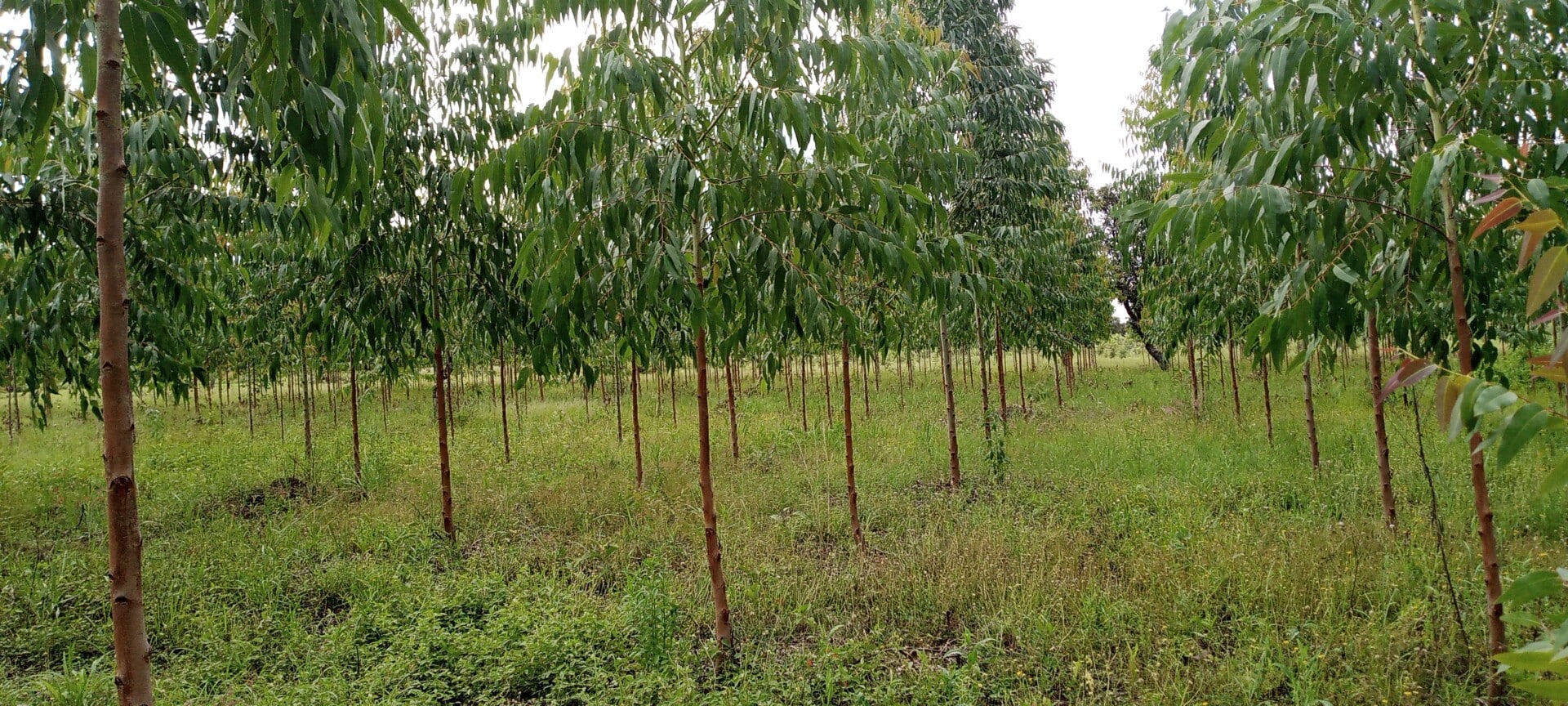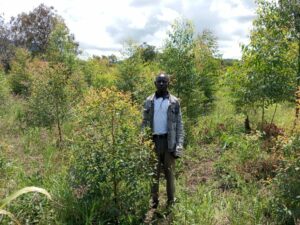Planting Trees to Save Lives

Article by Anne Kikundwa
Communities in Kamrono in the Ugandan district of Agago, face a lot of deforestation.
With the exception of shea trees which are predominant protected by strict community bylaws, many local tree species are increasingly being cut down to be used as wood fuel and charcoal. Charcoal burning is a common activity in the community that is detrimental to the environment. Trees are also cut down for other purposes like construction, and land opening for crop production.

Agroforestry to combat climate change
In efforts to restore the forests, AidEnvironment promotes the use of a range of methods, including promoting agroforestry – growing trees and crops together on the same land – and running tree-planting programmes at the household level. For the past two years, AidEnvironment through the WASH SDG Programme, has introduced a wide range of practices that integrate trees, forests, and agricultural production into the Kamrono community. Community farmer groups have embraced these practices and are now replicating them at the household level. Some members are planting woodlots, others are digging trenches on their farms for soil and water conservation, while others have adopted agroforestry practices. The establishment of a farmer demonstration plot showed that thinning and pruning could dramatically increase tree growth over two years. Those trials, combined with training and relevant extension materials, have helped farmers gain an understanding of effective agroforestry management. The biggest gains in tree cover are anticipated over the next 5 years. This will allow farmers to have trees to use as timber, firewood, and construction material.
Ochan’s story
Mr. Ochan Protectorate who owns a tree plantation in Teo Lim village in Lira Kato subcounty, says farmers like him are helping drive the sustainable development agenda at a local level. “You work only in the first year after planting. Then the trees grow on their own,” he says. Before AidEnvironment’s community based integrated water resources management (CbIWRM) trainings, he never had plans of planting any trees.
Ochan smiles from ear to ear when he starts talking about the transformation he anticipates from his tree-growing project. “When I started, my situation was not good at all, but today I know how to plan and optimize my land to its fullest potential.” Before taking part in the program, Ochan was not fully utilizing his land. It would be affected by floods during the rainy season and the soil would be hard to dig during the dry season. With the introduction of tree planting, Ochan adopted soil and water conservation measures that keep the soil moist, allowing crops to flourish even when there is less rainfall.
Ochan’s plans for the future have grown substantially since starting the tree planting project. He looks forward to maintaining his woodlot for years to come while teaching his children and other community members the valuable lessons he has learned through the AidEnvironment CbIWRM trainings. He has grown about 1,800 trees in the last 2 years and hopes to plant more in the near future. The tree species he has cultivated include White teak, Grevilia, and Anona, as well as some improved eucalyptus (on a very low scale).
“Over the last one year, I felt that I need to protect nature from all man-made issues. We are capable of saving ourselves from the climate change crisis that we are facing. To me, planting trees means saving our lives.”
Tree planting is a great way to increase communities’ interest in their local environment. Ochan was inspired by Eric Oceng who is chair of the Nursery Management Team who has demonstrated CbIWRM practices at his home. Everyone’s tree planting activity offers the opportunity to inspire other community members. This results in positive change in the community. Many community members have been inspired by Ochan’s initiative. In Teo Lim village, most members in his group of 35 are making an effort to establish woodlots and adopt agroforestry practices.
As an agricultural community, more forests means more reliable rainfall for Kamrono. This interest and effort indicates that the community is on a positive journey towards economic and ecology restoration through their collective effort.




